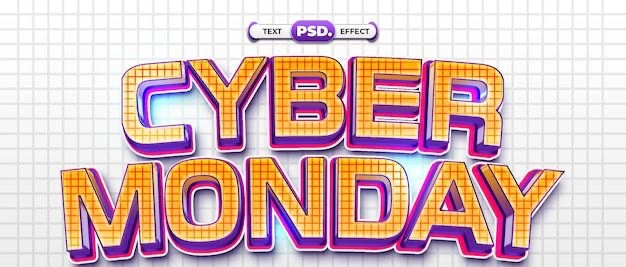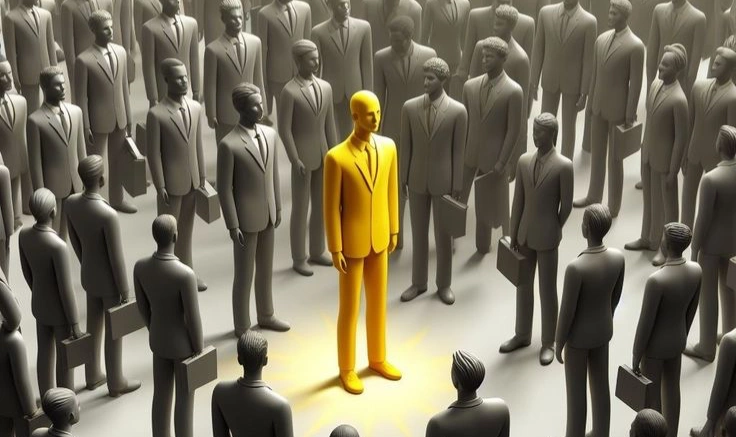Productivity Tips Posts on Crowch
Cyber Monday is an annual event that takes place on the Monday after Thanksgiving and Black Friday. While Black Friday was originally associated with traditional in-store shopping, Cyber Monday became the symbol of online sales, reflecting the rise of e-commerce in the digital age.
Origins
The term “Cyber Monday” was first introduced in 2005 by the National Retail Federation. Marketers noticed that on the first workday after Thanksgiving, online shopping activity spiked dramatically. This was partly because many people returned to work, where they had faster internet access, and began shopping online in large numbers.
This observation gave birth to the name and concept of a new “shopping holiday” specifically dedicated to online platforms.
Difference from Black Friday
The key difference between Cyber Monday and Black Friday lies in its digital focus. Black Friday was once all about waiting in long lines and rushing into crowded stores, while Cyber Monday was designed for those who preferred shopping from the comfort of their computers.

Over time, the boundaries blurred: Black Friday moved online, and Cyber Monday became part of a broader week-long sales marathon. Still, Cyber Monday continues to be strongly associated with the biggest discounts in online stores.
Scale and records
Cyber Monday has become one of the most profitable days of the year for e-commerce. In the United States alone, online sales on this day reach tens of billions of dollars annually. Electronics, home appliances, clothing, and household goods are among the most popular categories.
With the rise of mobile technology, Cyber Monday has grown even more. Today, the majority of purchases are made via smartphones, making shopping faster, easier, and more accessible.
Global expansion
Although Cyber Monday originated in the United States, it quickly spread worldwide. Today, online retailers across Europe, Latin America, Asia, and Australia participate in the event. In some countries, Cyber Monday has even surpassed Black Friday in popularity, as many shoppers find online purchases more convenient and safer.

Challenges and criticism
Despite its success, Cyber Monday has its critics. Some argue that it encourages overconsumption and unnecessary spending. Others point out that many discounts are more marketing tactic than real bargain, with prices artificially inflated before the sales.
Nevertheless, for millions of shoppers, Cyber Monday remains an opportunity to save money and buy desired products at better prices.
Conclusion
Cyber Monday has become a symbol of the digital shopping era, where technology defines consumer habits. It reflects not only the growth of online retail but also the shift in how people shop — from waiting in lines to buying with a single click. In the future, Cyber Monday is likely to continue growing, solidifying its role as a global celebration of e-commerce.
Being a leader isn’t about being first. It’s about being the one who acts first. The one who invests energy when no one else believes. The one who sees potential when others see only problems. The one who listens when it would be easier to command. The one who sets the pace before it becomes comfortable. Leadership isn’t about control — it’s about moving forward, even when the path is unclear.
Today’s world no longer responds to authoritarian leadership. People don’t want bosses — they want partners they can grow with. A modern leader isn’t the top of a hierarchy, but a point of strength. They don’t assert authority — they help others find their own. They don’t say, “I know how,” but instead ask, “How would you do it?” They’re not afraid of different perspectives, because they understand that diversity is a resource, not a threat.
One of the key signs of real leadership is the ability to create an environment for growth. Not just assigning tasks, but supporting the process. Not just demanding results, but helping people get there. Leadership isn’t only about outcomes — it’s about evolution. When the people around you start to think bolder, speak more honestly, and believe in themselves more — that’s when you’re not just managing, you’re truly leading. And that’s the essence of leadership.
A strong leader isn’t afraid to take a step back so that someone else can step forward. They don’t compete with the team — they create conditions where the team grows stronger than the leader. That’s true maturity. A leader knows their goal isn’t to be indispensable, but to build something that thrives without constant control. Their role is not to be needed — but to build resilience.

A true leader thinks horizontally. They don’t just look at short-term wins, but long-term consequences — one, three, even ten years ahead. They think in meaning, not just metrics. They understand that quick wins are useful, but direction matters more. They ask hard questions and are comfortable waiting for the real answers.
Another vital leadership trait is the ability to slow down. In a world obsessed with speed and multitasking, pausing can be a superpower. Holding inner stillness while everything outside is in chaos — that’s rare and deeply valuable. And it’s from this inner calm that real decisions emerge.
A leader is not a hero. They are the person who chooses to carry more than they have to. It’s not always about success — often, it’s about resilience. The ability to keep going when no one is watching. Staying loyal to themselves and to others, even when it’s hard. Showing up every day with a quiet “I’m here,” when it would be easier to step aside.

These are the leaders who shift the energy in teams, projects, and lives. Not because they tell others what’s right — but because they show what’s possible.
In today’s world, success is often measured by how busy we are — full schedules, constant achievements, rapid career growth, and never-ending productivity. Phrases like “hustle harder,” “sleep is for the weak,” and “be available 24/7” have become modern mantras. But behind this glossy image of ambition lies one of the most widespread issues of the 21st century — burnout.
Burnout is not just being tired. It’s a deep mental, emotional, and physical exhaustion. It’s when even things you once loved doing start to feel heavy and meaningless. Tasks that used to excite you now create stress or indifference. You begin to feel disconnected from your work, yourself, and the people around you. Your focus drops, your sleep suffers, your body feels drained, and your mind can’t stop racing. At its worst, burnout leads to the thought: “I’m not good enough, and nothing I do matters.”
The causes of burnout are complex: too much workload, lack of boundaries, constant pressure to achieve, poor work-life balance, and internal perfectionism. It’s especially common among professionals who work with people — teachers, doctors, therapists, managers, caregivers. But anyone can burn out — even a freelancer or a student overloaded with expectations and deadlines.
What helps prevent burnout? First, awareness and self-care. It’s essential to listen to your body and mind, to recognize signs of fatigue, and to give yourself permission to rest — not just physically, but mentally and emotionally. Work-life balance is not a myth; it’s a survival strategy. Sleep, hobbies, physical movement, social connection, silence — these are not luxuries. They are fuel for real, sustainable productivity.
Second, it’s important to re-evaluate your goals and expectations. You don’t have to be perfect. You don’t have to do everything. Learn to prioritize, delegate, set boundaries, and remember that your worth is not measured by your inbox or your output.

In today’s world, success is often measured by how busy we are — packed calendars, long hours, back-to-back meetings, relentless side hustles, and constant online presence. Phrases like “hustle harder,” “sleep is for the weak,” and “always be grinding” have become the unofficial slogans of modern ambition. Productivity is idolized. Stillness is dismissed. But behind this relentless push for achievement lies one of the most silent and widespread challenges of our time: burnout.
Burnout is not just being tired. It’s a deep, chronic state of mental, emotional, and physical exhaustion. It’s the feeling of being stretched so thin that even basic tasks feel overwhelming. It's when things that once brought you joy now bring stress, numbness, or dread. Your motivation fades, your energy drains, your mind feels foggy, and even rest doesn’t seem to help. At its worst, burnout whispers dangerous thoughts: “I’m not enough.” “What’s the point?”
This isn’t weakness. It’s a human response to sustained pressure without recovery. The causes of burnout are varied and complex:
- Unrealistic workloads
- Constant pressure to perform
- Lack of boundaries between work and personal life
- Emotional labor, especially in caregiving roles
- Perfectionism and the internal belief that rest must be earned
Burnout is especially common among people in high-responsibility or emotionally demanding professions — teachers, doctors, therapists, social workers, caregivers, managers. But it can affect anyone: a student burdened with deadlines, a remote worker never fully logging off, or a stay-at-home parent juggling invisible labor.

So, what helps?
First: Awareness. Recognize the signs. Burnout often starts subtly — trouble sleeping, irritability, lack of motivation, brain fog. Your body knows before your mind does. Listen to it. Rest isn’t a reward — it’s a biological need. Sleep, breaks, hobbies, human connection, solitude, creativity — these are not indulgences. They are fuel.
Second: Boundaries. Learn to say no. You are not obligated to be everything for everyone. It’s okay to log off. It’s okay to delegate. It’s okay to slow down. Reevaluate what truly matters. Is the endless hustle aligned with your values, or just a reaction to outside pressure?
Third: Redefine success. Productivity doesn’t equal worth. You are not your job title, your income, or your to-do list. You are a whole human being, worthy of rest, joy, care, and connection — even when you’re not achieving anything.
Sometimes, the most radical act in a burnout culture is to pause. To breathe. To ask yourself:“What do I need — not to be more productive, but to feel alive?”
Burnout is not a personal failure — it’s a collective issue, rooted in systems and expectations that glorify overwork and ignore well-being. The antidote begins with compassion. With permission. With stepping out of autopilot and remembering: life is more than output.
You don’t have to earn your rest.You don’t have to prove your worth.You are enough — as you are.
Burnout is not a weakness — it’s a warning sign. It’s a red flag telling you to pause, take a breath, and ask: Why am I doing all this? Work is a part of life — not life itself. Your value as a person isn’t defined by performance metrics, paychecks, or promotions. You are more than what you produce.